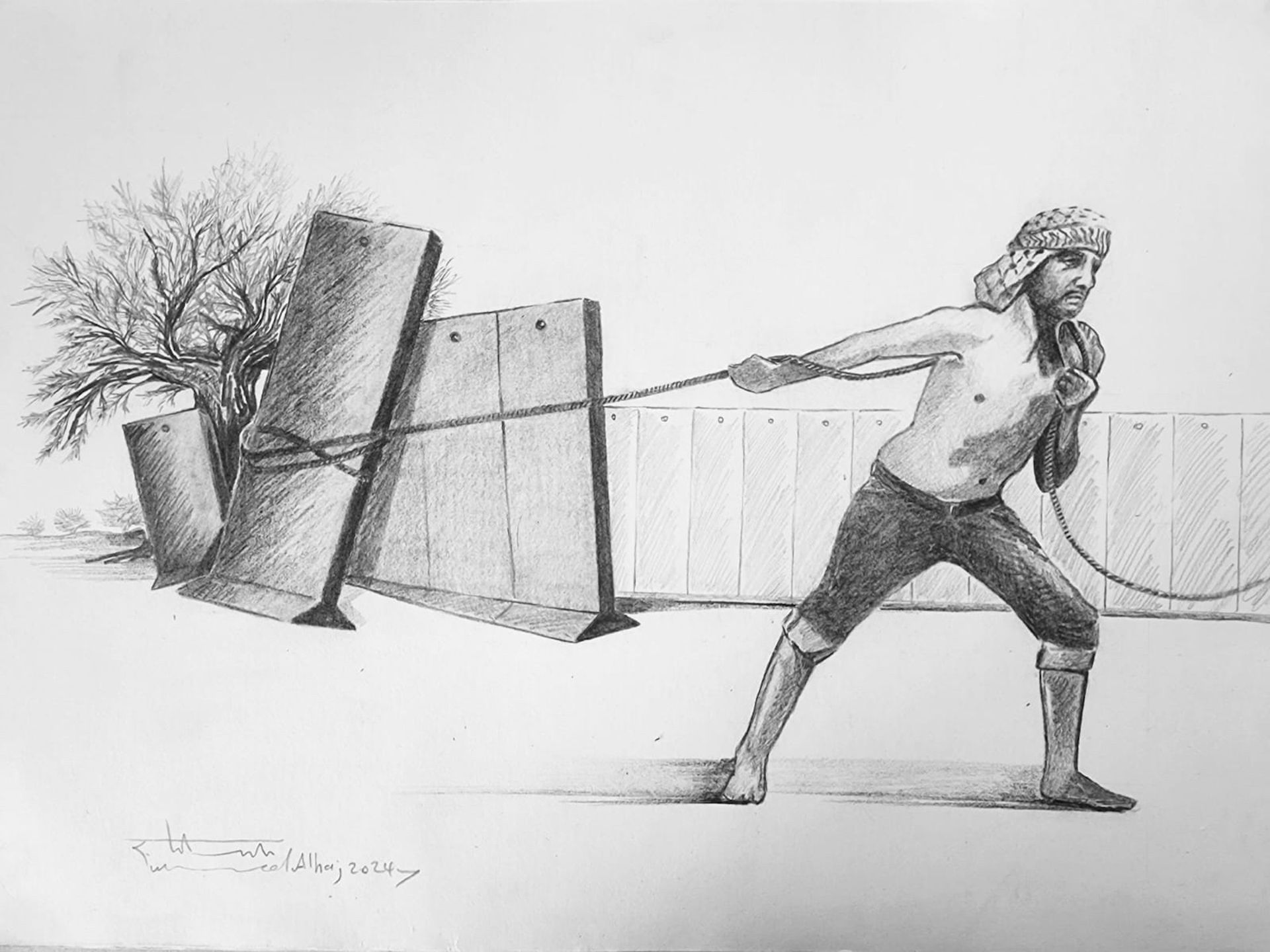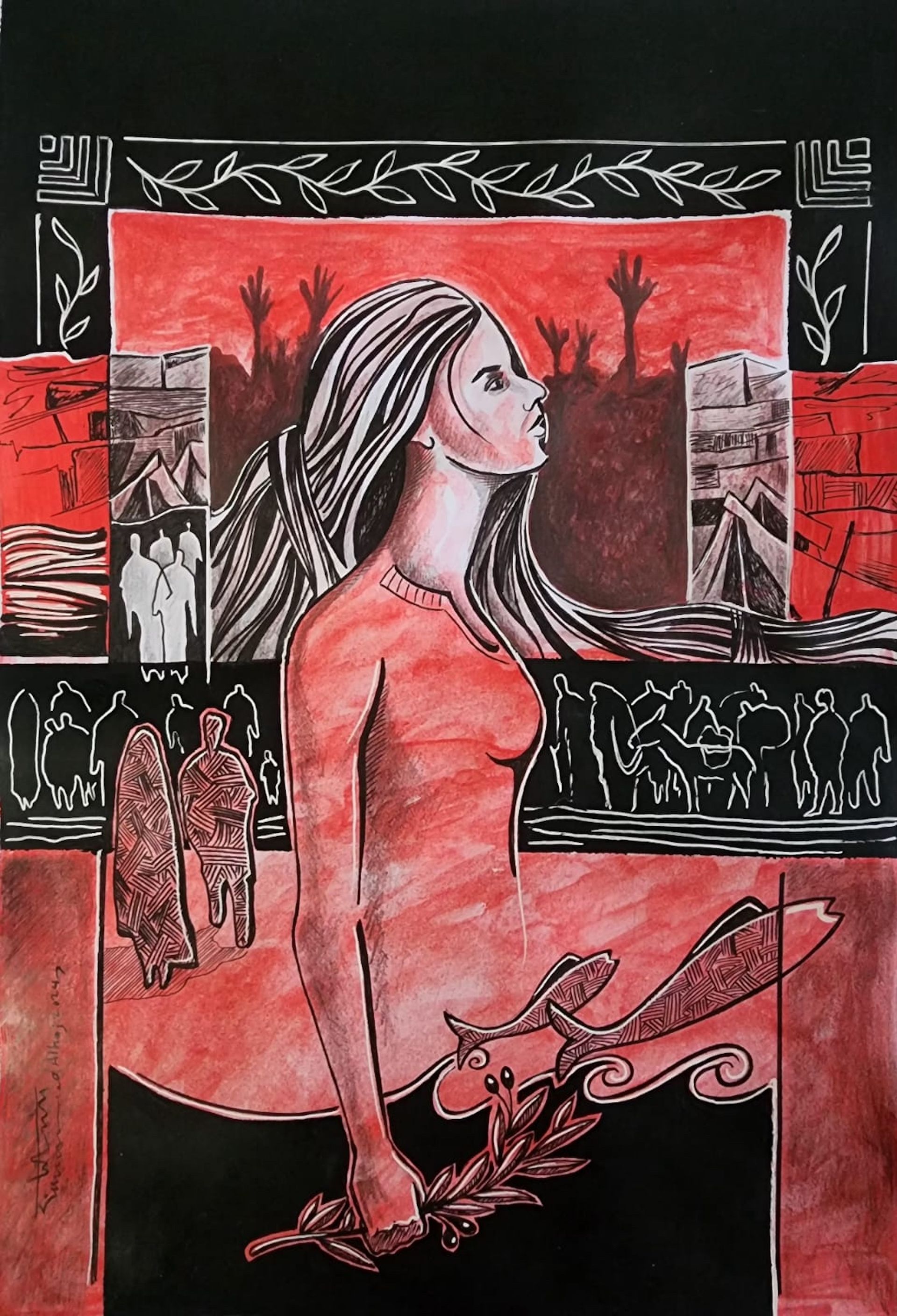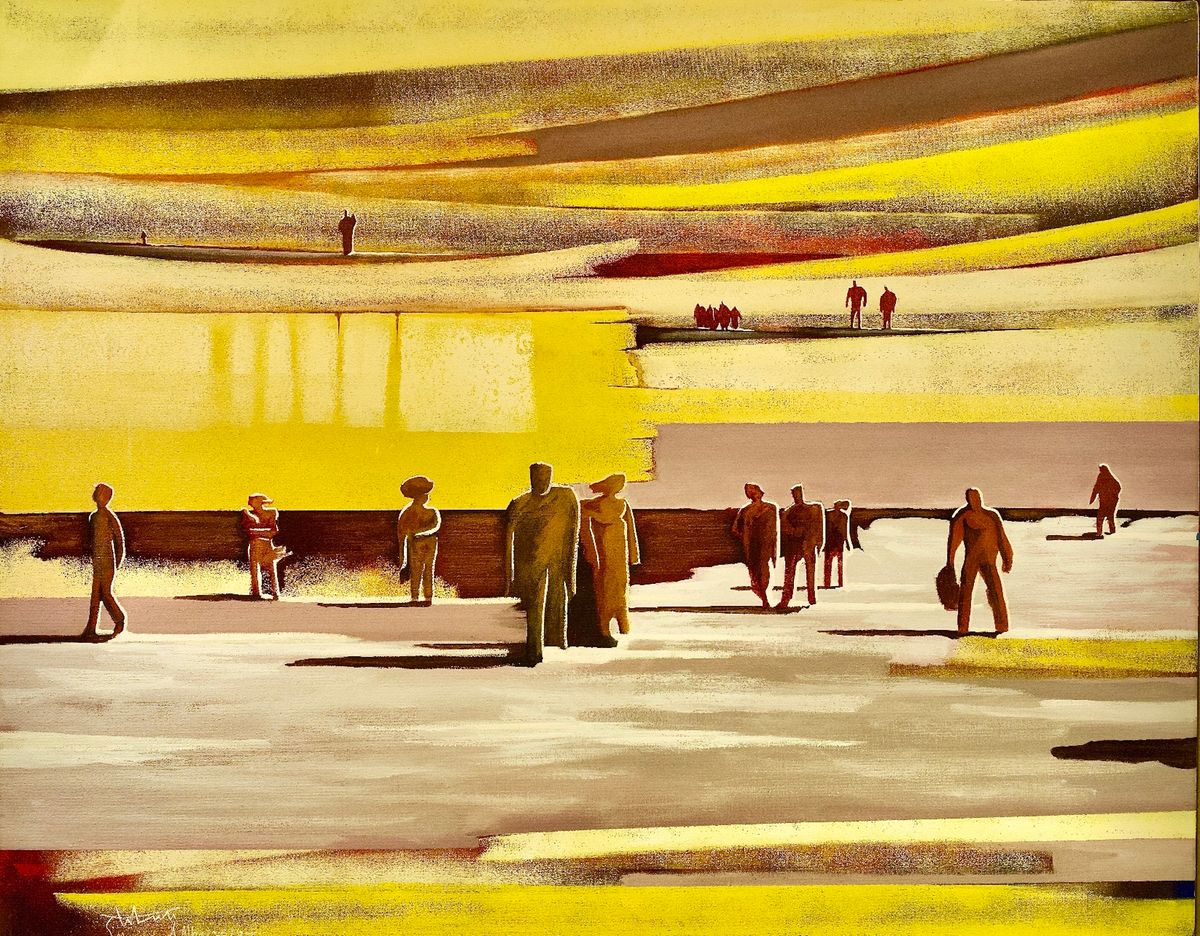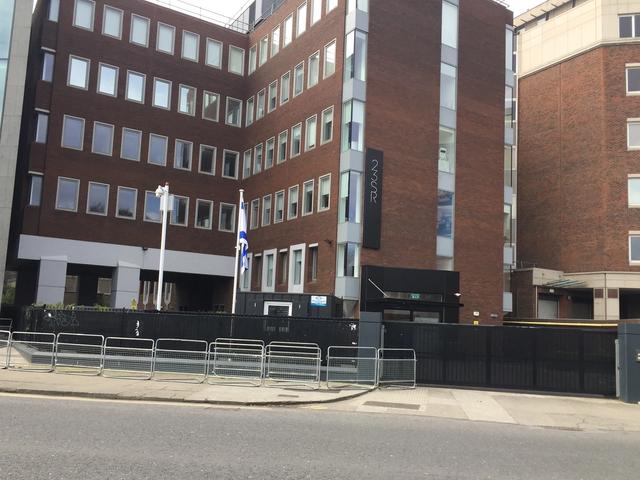The Palestine Museum US in Connecticut has entered the NFT (non-fungible token) marketplace this week, launching a collection on the platform OpenSea featuring work by the Gazan artist Mohammed Alhaj from his Displacement series.
The collection kicked off with an image of a 80cm by 100cm painting in acrylic that was shown in Gaza City in 2020 and at the Venice Biennale in 2022. A poignant take on the plight of many Palestinians, it features displaced figures wandering through uncertain terrain.
While there are individual artists in Gaza who sell their work as NFTs, such as Maysa Youssef, and the Ramallah-based artist Khaled Jarrar began working with NFTs in 2021, this collection marks the first time a museum has initiated an NFT programme in Gaza.
“By venturing into the NFT market, the museum is not only embracing the digital art realm but also providing a platform for artists like Mohammed Alhaj to showcase their work globally,” Faisal Saleh, the Palestine Museum US’s director, tells The Art Newspaper. “The NFT version of Displacement allows art enthusiasts and collectors to own a unique digital representation of this profound piece, all while supporting the talented artist behind it.”

A recent drawing by Mohammed Alhaj Courtesy the artist
The collaboration, Saleh adds, “not only showcases the talent and creativity of Palestinian artists but also paves the way for a new era of digital art consumption that transcends borders and barriers”. He adds that it “also highlights the resilience and creativity of Palestinian artists, even in the face of adversity”.
The 42-year-old Alhaj has dealt with his share of adversity. A week after Hamas terror attack on Israel on 7 October 2023 and the beginning of Israel’s retaliatory strikes, he tells The Art Newspaper, he was forced to flee his home in Gaza City and seek refuge in Khan Yunis. He and his young family lived in a tent there through March 2024.
Incredibly, throughout this ordeal, Alhaj kept on working, producing a series of pencil and ink drawings documenting the plight of his people. Some of these were smuggled out of Gaza, and others sent as digital images that were printed and exhibited at the Palestine Museum US’s exhibition in Venice during the 2024 Biennale.
In March 2024, a friend from Gaza City called Alhaj to relay the news that his art studio and 20 years of work had been destroyed by the Israel Defense Forces’ bombing. “My studio was right behind Al-Shifa hospital,” Alhaj says.
Since then he has fled to a safer area in central Gaza, where he and his family live at his father’s home. He is now starting to rebuild his oeuvre from scratch. Some of his work is in safe keeping at the Palestine Museum US, the Palestinian Museum in Bir Zeit and in private collections in Europe. “I have no studio here,” he says, “and it’s very crowded, but my art is my lifeline.”

A recent work on paper by Mohammed Alhaj Courtesy the artist
Alhaj, who has worked in a variety of media including sculpture, says he is inspired by artists like the Palestinian Sliman Mansour and Iraqi Mohammed al Ghani. In spite of harsh conditions in Gaza, he continues to produce new work in pencil, pen, ink and watercolours.
The subject of his new works continues to be the displacement of his people and their ongoing plight. His fragmented landscapes evoke a lost homeland, and his figures are caught in an urgent sense of motion, evoking the current situation as well as the war and displacement of 1948.
Alhaj hopes that the new NFT collaboration with the museum will help preserve the art that remains in Gaza. “Perhaps we Palestinians need it now,” he says, suggesting that NFTs might be an ideal medium for artists in war zones. “Especially after my colleagues and I lost so much of our work due to the ongoing bombing and destruction.”



